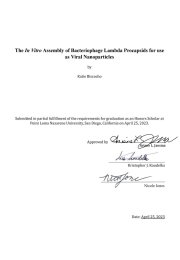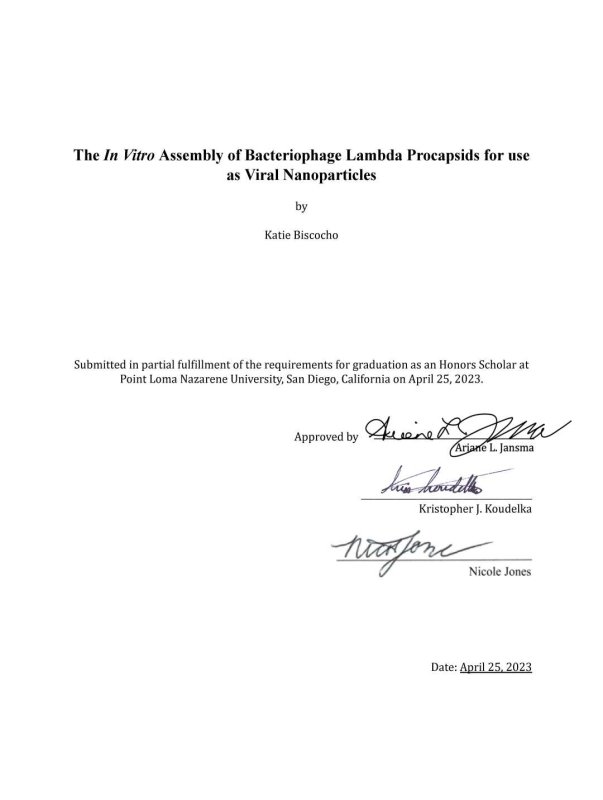- Resource Types
- Resource Languages
- Institutional Repository
About Site Language
WHDL is viewable in multiple languages. Use the pull-down menu to select a language to view the site.
I changed my language, but I’m still seeing resources in the other languages?
If a resource or text has not been translated into your selected language, it will appear in the initially added language. We are always looking for help translating these resources. If you can help, contact us!
WHDL - 00017636


Bacteriophage λ procapsids as effective drug transporters provide promising means of patient care and treatment within the medical field with implications in targeted drug delivery. The 3D icosahedral shape is constituted primarily of two proteins: gpE and gpD. Another protein, gpNu3, acts as a scaffold that mediates capsid protein assembly. Isolation of and subsequent introduction of each protein into a drug containing solution provides the opportunity for encapsulation of therapeutic drugs to be enveloped in an editable, fully formed viral container in vitro, thus improving payload concentration. Protein production, identification and purification techniques utilizing glutathione-S-transferase (GST) tags and affinity columns were evaluated in order to isolate individual procapsid components for further assembly. The success of procapsid formation in vitro using various ratios of gpE:gpD:gpNu3 was also evaluated. SEC data indicates that the combination of GST-cleaved gpE, gpD, and gpNu3 formed aggregates that were smaller than fully formed procapsids. However, the manipulation of capsid protein ratios yielded different size exclusion chromatography (SEC) peak formations, suggesting that the decrease in gpNu3 concentration and the addition of gpD in direct proportion to gpE resulted in an increase in the uniformity of structure development, which is a promising step into controlled formation of procapsids in vitro.
81 Resources
2024
2024
2023
2024
2024